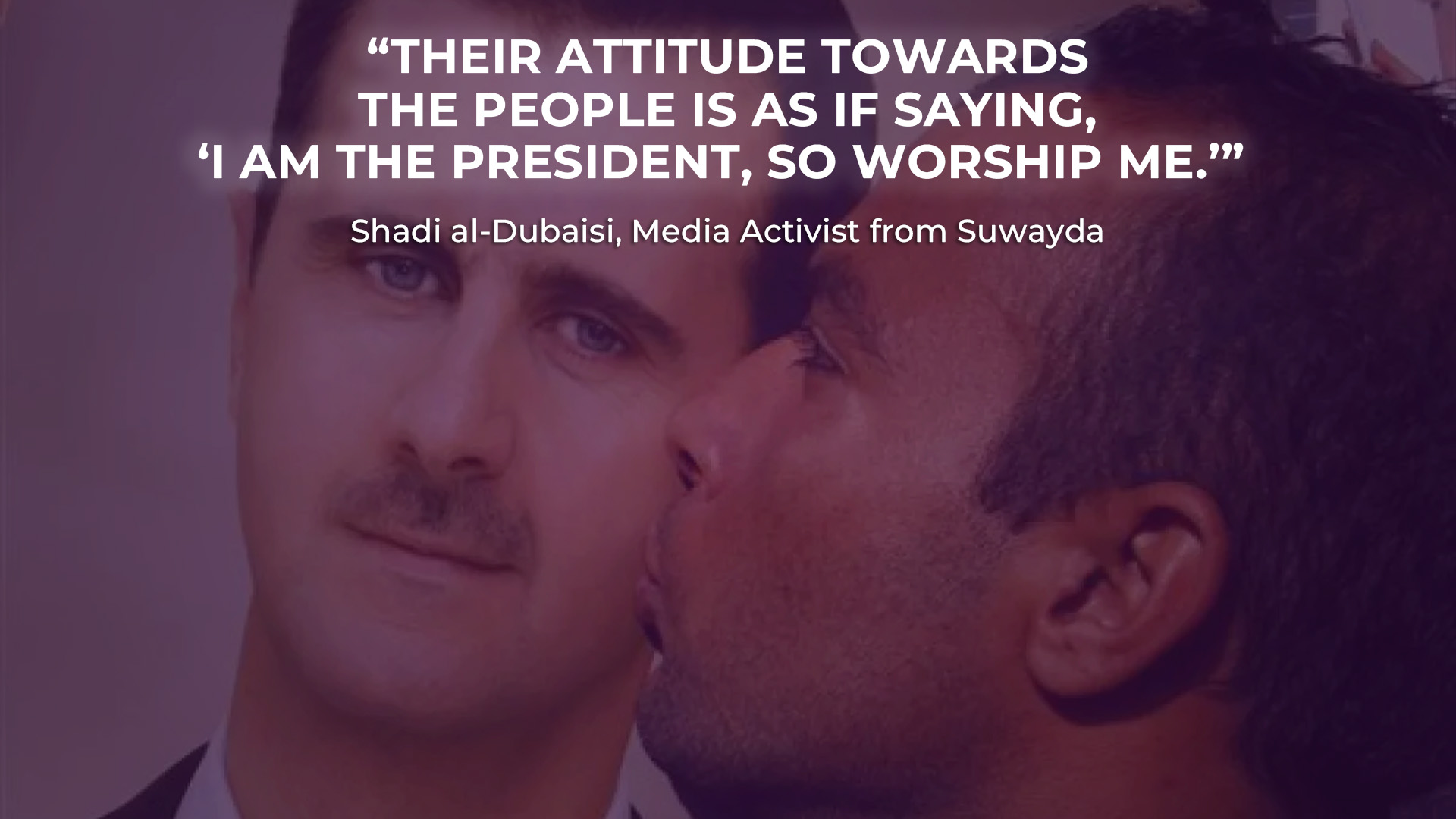
Written by Ibraheem Haroon
Tires burn in the street, obstructing all routes into the city. The doors to the Baath party headquarters are welded shut and crowds of angry Syrians tear down the photos of Bashar Assad and his father, trampling them underfoot. The public square is full of men and women waving the flag of the Syrian revolution and demanding the removal of Assad.
This is not 2011 at the height of the Arab Spring, but the summer of 2023, only a few short months after Assad has rejoined the ranks of the Arab League, 12 years after being expelled. So why when it seems the world is ready to once again embrace him does he face renewed opposition from the Syrian people?
The Assad regime has long relied on the support of various factions, including the Alawite community, to maintain its grip on power. However, this past year has witnessed a decline in support for the regime, with descent, criticism, and demonstrations erupting in different parts of the country from seemingly all sectors of society.
Most surprising, to many was the vehement and scathing videos and statements from longstanding Assad strongholds like Damascus and Latakia, and the protest movement that spread like wildfire through Syria’s Druze majority Suwayda governorate.
Yet why after nearly 13 years of war have a number of his former supporters started to voice their disapproval? To understand the current situation we must first understand the history and dynamics of Syrian society.
Historical Context
L24 spoke with Mohannad Abdulrahman, a history lecturer at Idlib University, who explained, “Hafez Assad made it clear to the Alawite community that their presence is tied to his rule. As long as they (the Assad family) are present in the spotlight, their (the Alawites) interests and privileges continue. This played a significant role in maintaining the support of the Alawite community for the Assad regime.”
This longstanding system of patronage in terms of employment, appointments in key positions in government, military, and security as well as the media, telecommunications, and economic privileges through the trade and industrial sectors has long secured the undying loyalty of the minority Alawites.

Public outrage can be attributed to several instigators, foremost the economic and living conditions’ deterioration, including a significant increase in fuel prices, which has led to widespread protests. The regime’s response to these demonstrations, characterized by a lack of responsiveness and a dismissive aloofness, has further exacerbated public anger and agitation against the regime as Abdurahman mentions, “the regime did not take the demands of the locals seriously. It deals with Syrians as if they are its enemies. Therefore, its decisions and actions lead to further agitation against it.”
Social media platforms, particularly Facebook and Twitter, have played a crucial role in facilitating the spread of popular anger against the Syrian government. Local pages on Facebook have been instrumental in sharing footage of daily protests, while Telegram has become a common platform for news and updates in opposition-held areas. The impact of social media in amplifying dissent cannot be underestimated.
Syrian journalist Ahmad Kemal offered a different view on the situation telling L24, “I don’t see a significant loss for Assad from his old friends.” Kemal stressed that those in Latakia, an Alawite stronghold, and other regions of recent unrest like Damascus, are more due to frustration with declining living conditions and the need to vent than a precursor to an uprising. “The numbers are very small and insignificant,” he continued, “I watched one of these Alawite critics talk about the problems of daily life, yet they are completely with the regime.”
However, the decline in support for the Assad regime extends beyond the Alawite community. Suwayda, a Druze-majority province has been vocal in its opposition to the regime since the beginning of the Syrian revolution.
Yet unlike disgruntled Alawites, the response from Suwayda was motivated by more than simple economic hardship. To find out more about Suwayda, its history, and complexities L24 contacted Shadi al-Dubaisi a revolutionary media activist from Suwayda.
“Since the beginning of the Syrian revolution in March 2011, Suwayda has clearly declared its position by supporting the revolution through demonstrations, sit-ins, and peaceful activities demanding the departure of the regime,” Dubaisi told L24. “Moreover,” he continues, “Suwayda refrained from sending its sons to serve in the regime’s army. Over 45,000 young men refused to join and participate in its combat operations against other Syrians.”

According to Abdurahman the stagnation of the country due to outside forces attempting to freeze rather than resolve the conflict has only worsened things, “agreements and treaties, such as those between Turkey and Russia, have contributed to maintaining the status quo in Syria. This has led to worsening conditions in Syria, especially in terms of the economy, which has caused dissatisfaction among the Syrian population, leading to protests in various regions, including Suwayda.”
Suwayda Movement
The unrest in Suwayda is a significant manifestation of the decline in support for the Assad regime and has been unique in both its longevity, with daily protests and attacks on the institutions of the regime ongoing for nearly four months, and in its seeming lack of the usual heavy-handed retaliation so commonly used by the regime in cases of public dissent.
Kemal suggests that the regime’s lack of response to the Suwayda Movement, unlike its actions toward other dissident movements, can be attributed to the movement’s limited numbers and reach. The regime perceives it as a small, localized movement, “protests came out in Suwayda, a small province, whose population is small, not exceeding 600,000, meaning the population there doesn’t exceed several neighborhoods of Aleppo or Damascus and the movement didn’t extend to Damascus or Aleppo, or the rest of the provinces.”

“The only solution for the regime is to be overthrown,” asserts Dubaisi, “The main reason currently is the absence of a state in Syria; there’s no system, just a ruling militia that has practiced killing, torture, and oppression for decades and continues with this policy. They are unwilling and unprepared to make any concessions to the Syrian people. Their attitude towards the people is as if saying, ‘I am the president, so worship me.’ Therefore, the only solution in Syria is the departure of this regime and its militias.”









